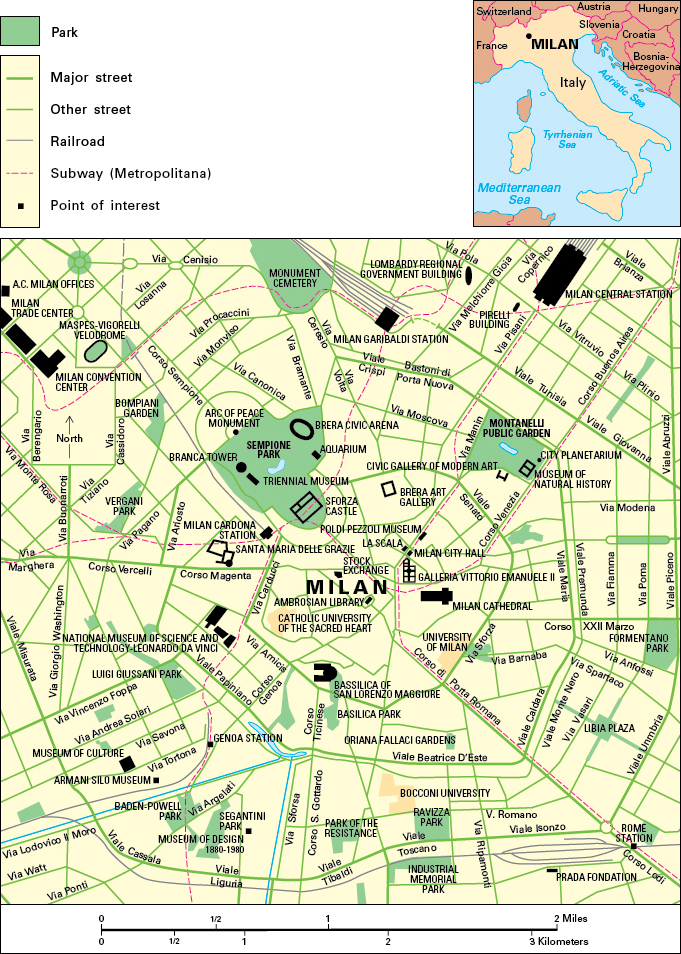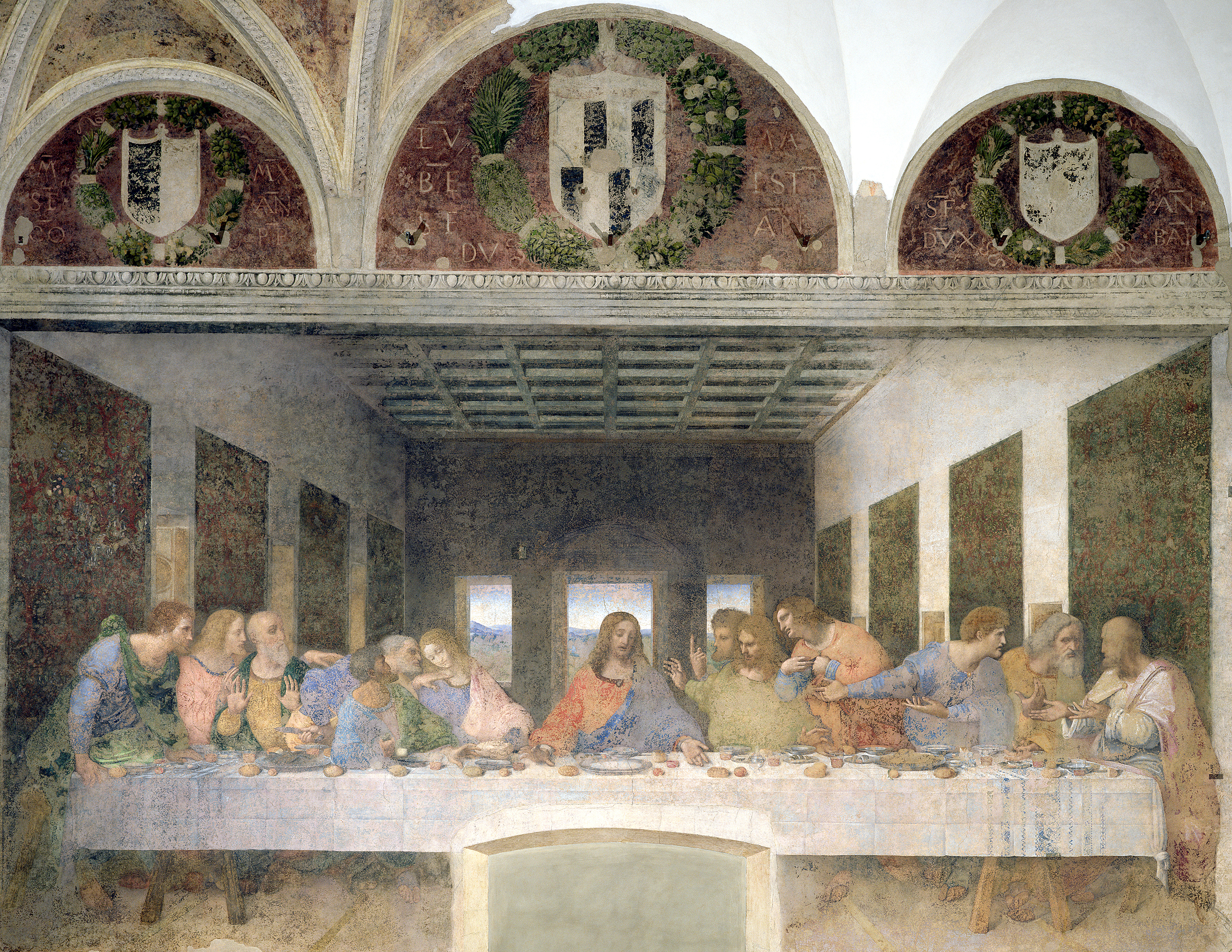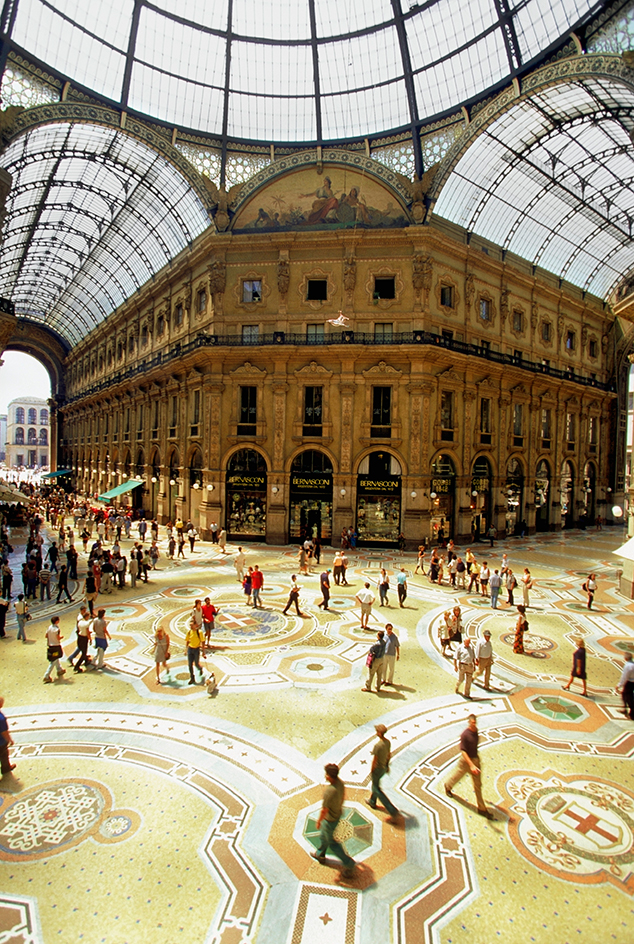Milan, << mih LAN or mih LAHN >> (pop. 1,371,498), is the second largest city in Italy. Only Rome has more people. Milan ranks as Italy’s chief center of finance, manufacturing, and international trade. The city’s location in northern Italy, near a pass through the Alps, made it a center of trade as early as the A.D. 100’s. Many tourists visit Milan to see the city’s priceless works of art. Milan is the capital of Lombardy, one of the political regions of Italy. The city’s name in Italian is Milano.
The city
covers 70 square miles (182 square kilometers). Much of Milan has a modern appearance, but it also includes a number of beautiful ancient buildings.
Milan’s large Gothic cathedral stands in the heart of the city, and the nearby area includes many cultural attractions. Music lovers from many parts of the world hear concerts at La Scala, one of the leading opera houses of Europe. The Ambrosian Library is a treasure house of rare books and ancient manuscripts. Masterpieces of Italian painting hang in the Brera Art Gallery, the Civic Gallery of Modern Art, the Poldi Pezzoli Museum, and the Sforza Castle. The fortresslike castle once served as the home of Milan’s rulers. Leonardo da Vinci painted The Last Supper, one of the most famous masterpieces in history, on a wall of the monastery of Santa Maria delle Grazie. Visitors to Milan may see this painting.

Milan has several major universities, including Bocconi University, the Catholic University of the Sacred Heart, and the University of Milan. The city also has several technical institutes.

The 36-story Pirelli Building, one of the tallest business structures in Italy, stands in an area of modern office buildings in the northern part of Milan. Industrial areas and residential suburbs extend from the city in all directions. Like other modern cities, Milan has such problems as air pollution and traffic jams.
People
of Milan are called Milanese. They have a reputation for ambition, energy, and skill in business. Many earn their living as management personnel with a business firm or as skilled workers.
Many Milanese like to spend afternoons at a cafe in the city, making business deals or chatting with friends. A favorite gathering place is the Galleria Vittorio Emanuele II, a large, glass-roofed building that includes restaurants and shops. The Galleria, often called the “living room of Milan,” stands near the cathedral.
Economy.
Milan is the site of Italy’s stock market and the headquarters of its major banks. The Italian advertising, publishing, and design and fashion industries are also centered in the city. The Milan area has thousands of small and medium-sized factories and several huge manufacturing plants. Leading products of Milan include chemicals, electric appliances, textiles, tires, and transportation equipment. The city is a hub of major highways and railroad lines, and it has two major airports–Linate and Malpensa.
History.
Around 400 B.C., the Celts, a people of western Europe, founded a town on the site of what is now Milan (see Celts). In 222 B.C., the Romans conquered the town, which they named Mediolanum. Mediolanum, later called Milan, became a Roman military base and also a center of trade between Rome and central Europe. By the A.D. 200’s, it was one of the largest cities of the Roman Empire. Germanic tribes took over Milan and some other parts of Europe in the 400’s. The West Roman Empire fell in the late 400’s. Trade declined, and Milan became a small town.

The city regained importance in the 1000’s as European trade and commerce expanded. From 1277 to 1535, Milanese nobles governed the city. They hired great artists who created beautiful buildings and works of art.
The Spanish Empire took over Milan in 1535, and Austria gained control of the city in 1714. French forces led by Napoleon conquered Milan in 1796, but Austria regained the city in 1815. Milan became part of the Kingdom of Sardinia in 1859 and part of the newly formed Kingdom of Italy in 1861. The city developed some of Italy’s first modern industries in the late 1800’s.
Benito Mussolini, who ruled Italy as dictator from 1922 to 1943, founded his Fascist movement in Milan in 1919. Allied bombings damaged large areas of Milan during World War II (1939-1945), but the people rebuilt their city. The 1950’s and 1960’s brought great industrial growth to Milan. Many people came from southern Italy to work in the city’s factories. This increase in population led to a severe housing shortage. But in the 1960’s and 1970’s, the city helped finance the construction of hundreds of new apartment buildings.
